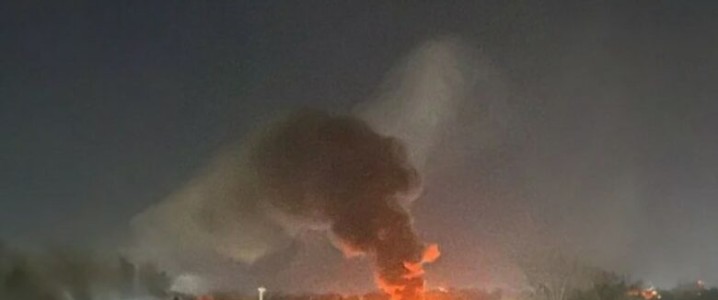In a new operational blow to Russia’s refining capacity, the Kirishi complex has reportedly shut down its CDU-6 crude distillation unit, the largest processing block at the plant, following damage from a Ukrainian drone strike.
According to Reuters, the refinery’s core capacity is now offline, though this has not been confirmed officially by Moscow.
The CDU-6 unit historically accounts for most of Kirishi’s processing output, and its halt means a significant drop in daily refined product volumes. Two industry sources cited in the Reuters report estimate the shutdown could last approximately one month.
While exact daily loss estimates remain unconfirmed, the halt could take up to 160,000 barrels per day off the market for a month, considering that Kirishi’s total crude-processing capacity is around 360,000 bpd, with CDU-6 handling approximately half of that capacity.
That shutdown comes as Russia signals plans to raise output by 137,000 bpd at the upcoming OPEC+ virtual meeting to stabilize prices later this month. The Kirishi cut now undermines that buffer, constraining flexibility in an already volatile market.
European fuel markets are also paying close attention here. The shutdown tightens supplies of diesel and middle distillates, which are already under pressure from sanctions, logistical bottlenecks, and other disruptions. Even if other Kirishi units or nearby refineries partially offset the loss, refiners will face a steeper margin squeeze.
Meanwhile, Ukraine claimed responsibility for a separate strike overnight on the Feodosia oil terminal in Crimea, a key transshipment hub distinct from Kirishi that serves as a rail-sea fuel interchange for Russian military logistics. Kyiv’s defense forces said the terminal’s storage infrastructure sustained “significant damage.”
President Vladimir Putin recently warned that removing Russian crude or curbing its refined output could push prices “well above $100 per barrel”.
Surgutneftegaz, owner of the KINEF-Kirishi complex, has not yet issued a statement confirming the scope of the outage or estimated repair timeline. Market observers are tracking product flows and satellite imagery for signs of disruption as refiners and trading desks reassess exposure to Russia’s shrinking refining network.
By Charles Kennedy for Oilprice.com
More Top Reads From Oilprice.com

